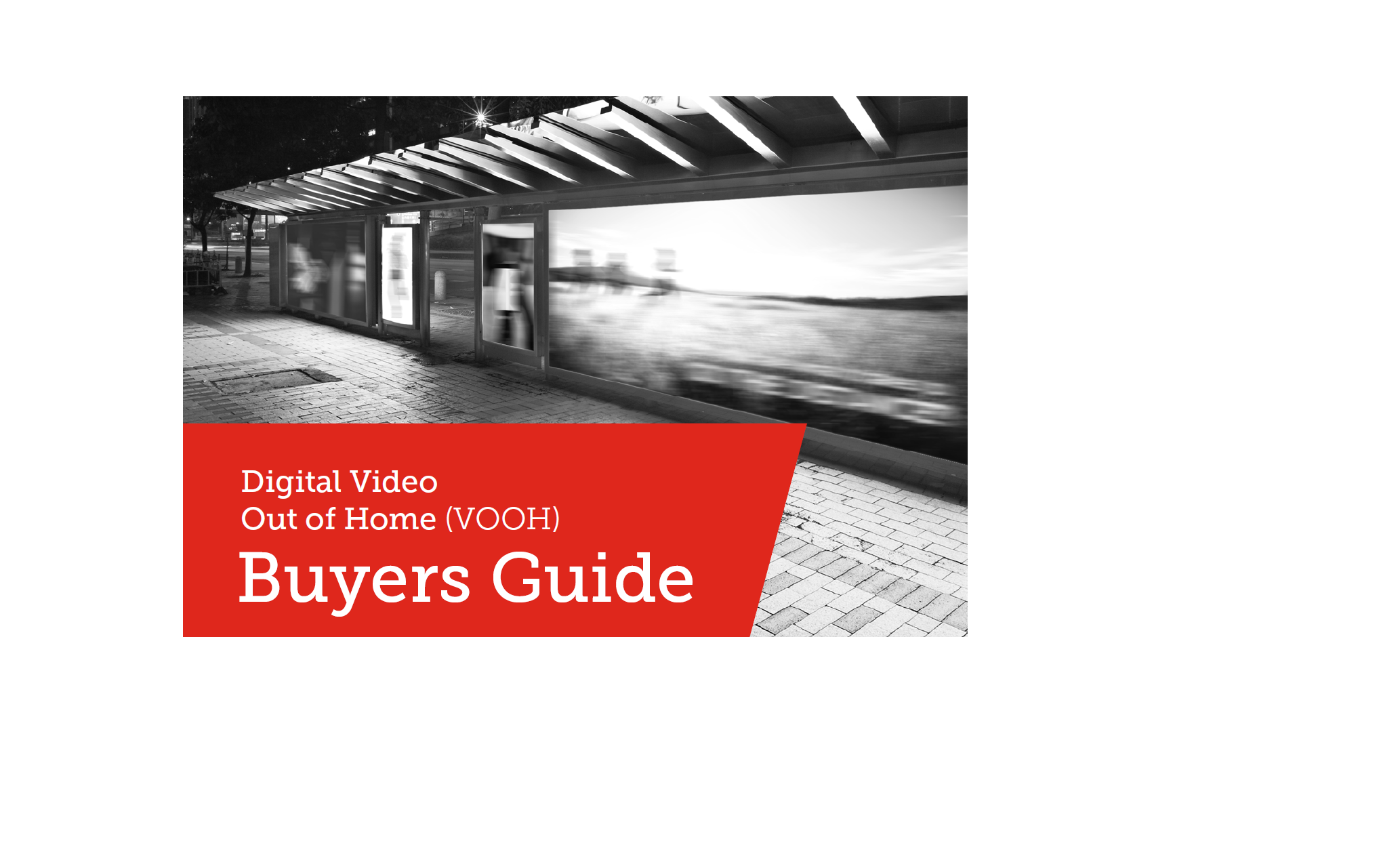Out of Home is the Next Frontier of Video and There's a New Guide to Navigate it for Advertisers

The media consumption changes that have occurred as a result of the pandemic -- specifically the transition to non-ad supported or limited ad supported networks -- coupled with the constrained supply of premium brand-safe video impressions have led to creative and innovative solution-oriented thinking on how to meet this supply crunch. It is also allowing for the rare opportunity to tear down legacy models and re-define which media types fit acceptable definitions for the digital era.
Out of home advertising has been undergoing a digital transformation for over a decade. As digital screens replace traditional vinyls and paper in transit, and new screen apertures from interactive kiosks in malls to retail end caps to Wi-Fi enabled information hubs dot the urban landscape, the transformation from once passive wallpaper to high-utility, high-impact, multimedia OOH has given way to massive new swaths of video inventory for marketers to leverage. In fact, it's occurring so rapidly that it's almost as if you need a guidebook to truly grasp the extent of what is out there and how to understand and measure it. So it is a good thing that the Out of Home Advertising Association of America (OAAA) has come to the rescue with the newly released Digital Video Out of Home (VOOH) Buyer's Guide -- Reaching Consumers Where They Are in a Multi-Screen, Multi-Channel World.
Michael Rosen is Chief Revenue Officer of Intersection and is the co-chair of the Video Out of Home committee of the OAAA, which was in charge of the creation of the guide.
What is Intersection?
For a company whose ad units were located among some of the hardest hit areas during the pandemic (cities, airports, malls), you might expect at least some tinge of bitterness; some feeling of mental exhaustion or dismay. Rosen indicates nothing but positivity and optimism about the future. "The past year-and-a-half was and continues to be an incredible learning experience," he says. "As people were getting outside onto the streets, we were there with LinkNYC to provide real-time updates on public health guidelines and critical resources. While people were deciding when to go to the grocery store or pharmacy, Link informed them of the best times to run those errands based on data through our partnership with Foursquare. And while work-from-home turned neighborhoods into business centers, our digital screens from L.A. to Chicago to Philly provided context and utility based programming. Digital OOH became and remains an essential information system that people tune into."
Looking forward, Rosen is enthusiastic. "Now we have cities opening up, people are getting out on the streets again, taking public transportation, going below ground to get to work and travelling," he notes. "When you take the pent-up demand to get back to those public spaces, coupled with consumers' increased engagement with video, you have a much greater appreciation around VOOH."
Complete integration of digital video buying isn't the only seismic change that is happening within the agency community. While specialty OOH divisions are still an important and valued part of the agency world, the pandemic and its aftermath have allowed video buyers a more fluid ability to deliver their video goal GRPs. Rosen describes the Buyer's Guide as a "labor of love" to educate those buyers and the market at large.
Why a Buyer's Guide?
The Buyer's Guide provides rationale, research and case studies that illuminate the power of VOOH, both for those who are familiar with it overall and for those who are newly empowered to integrate VOOH into their wheelhouse. "The Buyer's Guide really level sets that VOOH can deliver anything that other video options can," Rosen explains. "Sometimes even better. In terms of viewability, and fraud, and brand safety, VOOH has none of these issues. We can measure the exact same outcomes as any other video platform."
Over the past decade there has been a movement towards buying video against specific audience types (a.k.a. new homeowners or auto intenders) vs. solely demographics. Given the broad mass reach nature of OOH can this medium meet that level of preferred targeting? Rosen says yes and then some. "Every company has their own way of doing it, but they are doing it," he notes. "At Intersection we partner with Neustar to identify and append the audience segment information to our screens and assets across the country. That has been table stakes over the last few years. We actually see the combination of 'let's look at the contextual proximity of places (which grows in importance over the cookie-less future)' with the audience segments as a unique advantage. We see the literal journeys of these consumers."
The Buyer's Guide not only provides a taxonomy of all the location types that a buyer can buy VOOH, but also an extensive overview of companies that supply the inventory. It details the sources and various levels of audience and contextual targeting available. The Guide also is very useful in communicating common creative standards used across platforms and the many ways that VOOH can be used creatively.
Creative and VOOH
Whether it is for a 101 on VOOH for the new OOH buyer, a refresher for the long-term practitioner, or a resource for the generalist media executive, The Digital Video Out of Home Buyer's Guide is a strong and essential reference.
You can download your copy of The Digital Video Out of Home Buyer's Guide here.
Click the social buttons to share this story with colleagues and friends.
The opinions expressed here are the author's views and do not necessarily represent the views of MediaVillage.com/MyersBizNet.


